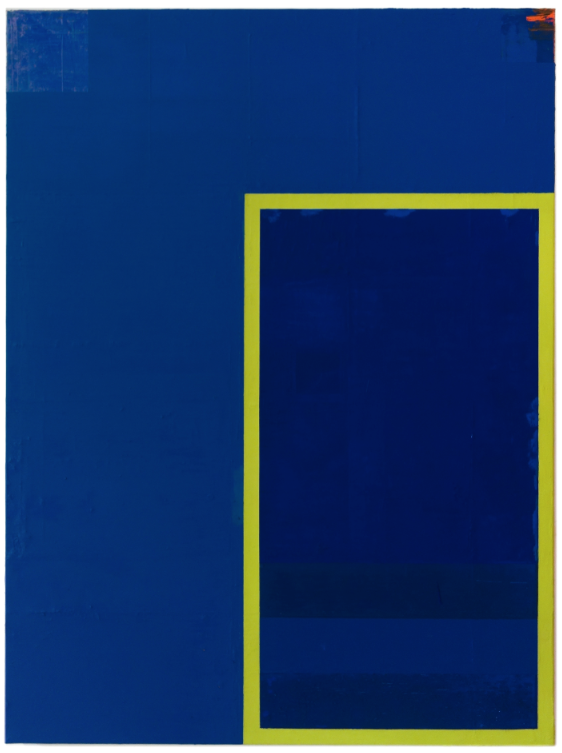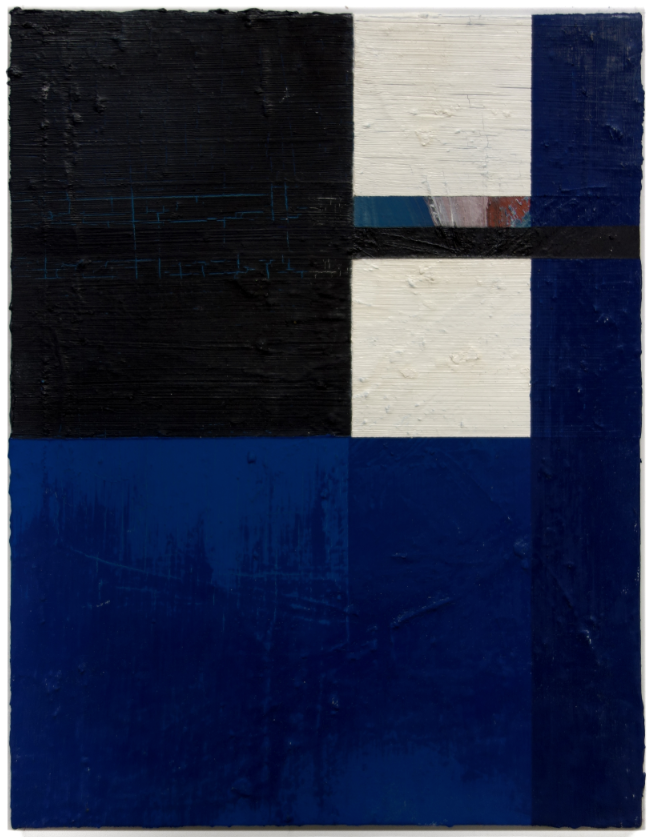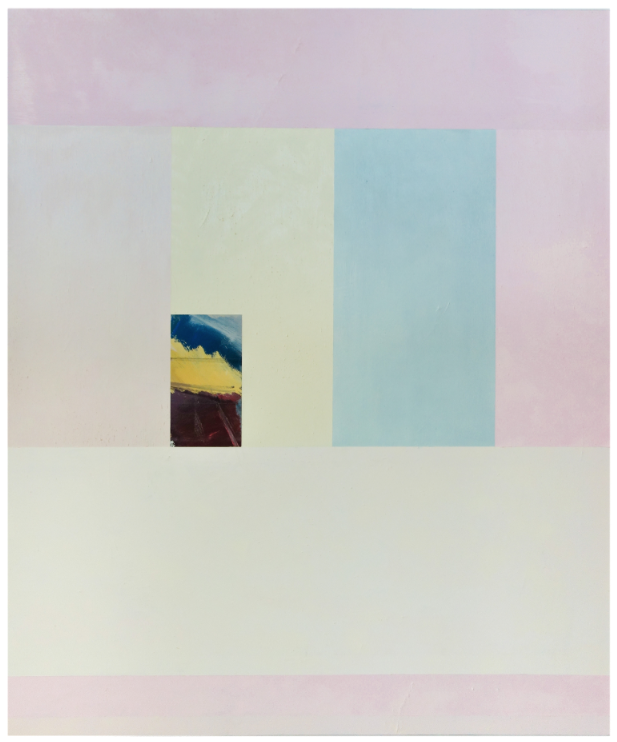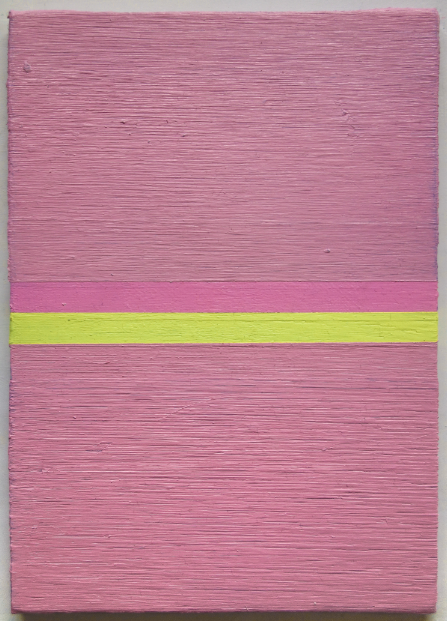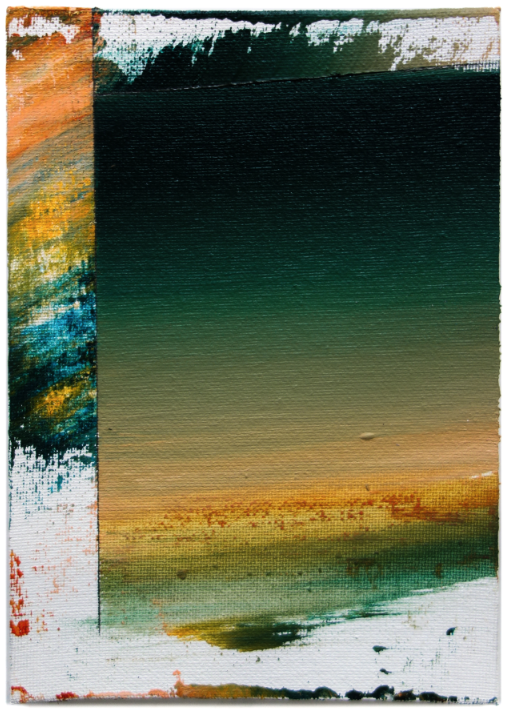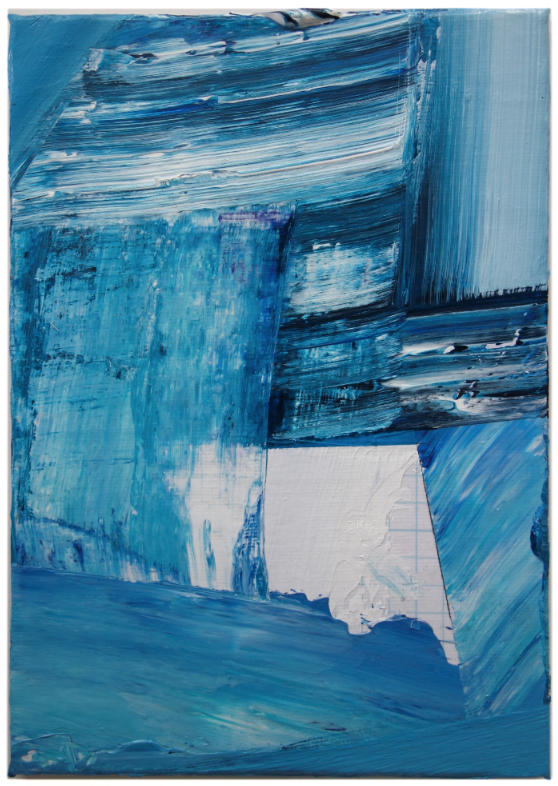Written By Maria Vogel
Minku Kim’s abstract works investigate light, color, composition, and space. The minimalist works Kim paints vary in size and scale, but always involve a methodical approach in execution. Though seemingly straightforward in their appearance, Kim’s canvases have depths to them, in both form and story. Kim lives and works in Brooklyn, NY.
You have a very interesting journey (from grad school to now) that led you to create the bold and colorful works that are currently your practices focal point. Can you tell us about what led you to this creative point?
I earned an MFA in Sculpture from New York Studio School where I had a fairly independent and interdisciplinary program. At the same time, there was a strong sense of figurative tradition that was highly rooted and disciplined from the masters of the past (both European and Oriental artists).
I totally immersed myself in the first year and learned so much. Then, I felt like I was back in my undergraduate studies where I was labeled as ‘teacher’s pet’ or ‘A+’ student. I made the work that were ‘appealing’ and ‘straight-out-of-textbook.’ Suddenly, I got a strong urge to rebel and to make the works that are uncompromising and ‘my own’ as I was getting tired of being called out as ‘derivative’.
For the first time in my life, I listened to hardcore punk music and found out about the sub-genre in punk culture ‘Straight Edge’ which restrains from all alcohol and drug abuse. That fascinated me. The idea of punk bands that choose to not engage in the consumption of any alcohol or drugs struck me as radical.
I decided to have fun in making the kind of art that I wanted to create while keeping my own authentic voice, without being afraid of being typed or categorized. The idea of ‘Straight Edge’ punk really freed me from the idea that paintings are either good or bad. I started to just make paintings that I wanted to see and have in my own space without any preconceptions. Since then, I have been having fun creating my own work without worrying about what others would think of my work.
Your works are layered in memories and meaning. Can you explain how each work stands alone to you? What do you see when you look at one of your paintings?
I immigrated to New York from Seoul, South Korea without knowing much English at all. I had a difficult time communicating verbally and not understanding linguistic information. That has influenced the way I speak through my visual language which is often times opaque and ambiguous.
I focus the formal elements right from the beginning. They are rooted in my psychology and emotions of the day. I continue to revise and improvise the work until I can recreate a sort of vague memory or imagination. Each work stands as an amalgamation of specific memories, experiences and feelings. They are in ways both extremely specific and quite generic or universal.
For example, ‘S.E.P (Deer in the Flashlight)’ is about the memory (from both a real-life event and from movie scenes) of witnessing a deer at night by the highway. It is painted from my imagination of the seeing a deer get hit by the car on the highway in the dark. The painting was made as immediately and quickly as the sensation of hitting a deer or witnessing a deer getting hit by a fast car in a split-second incident. The painting only took two days and it is one of the quickest painting I’ve done.
Another example, ‘S.E.P (Red Window),’ is a piece that took me two years to complete. The piece is purely abstract with use of only formal elements (linear lines, different brush strokes, and surface treatments). It is composed with compartments of rectangles and ‘windows’ that both disturb yet harmonize the different picture planes.
I am an admirer of architecture and interior design. I like the disciplinary nature of the architecture and painting that creates a spatial depth through vigorous exploration of proportionality and structural elements. I love the idea of extreme clarity and ambiguity in depth within pictorial space.
How do you choose your color palette for a particular work?
My feelings, psychological state, and emotions dictate the color palette and I simply go along with the painting. It is very intuitional and based on each day’s experiences and feelings. However, I don’t really know what colors to pick up until I get to the studio and sit down in front of my desk with a painting.
I used to write down color ideas from what people are wearing in the subway. NYC attracts some of the most inventive people in the world. I would write down my feelings about an old lady with specific lavender pink gloves and stuffy grey wool coat, with blue socks and blue-black leather shoes, then try to internalize these intensely immediate reactions of seeing certain color combination on people’s clothing or paintjobs on graffiti walls, etc. I’d then recreate this memory or sensation into my personal work.
What other artists inspire you – both living and dead?
These are all the people whose work I have posted on my Instagram feed already or plan to do so in the near future.
Dead: Picasso, Matisse, Rene Magritte, Josef Albers, Mondrian, Morandi, Howard Hoghkin, Richard Diebenkorn, Francis Bacon, Ellsworth Kelly, Van Gogh, Pierre Bonnard, Cy Twombly, Blinky Perlamo, Michealangelo.
Living: Richard Serra, Yayoi Kusama, Ed Ruscha, Susan Frecon, Mark Grotjahn, Harold Ancart, Julian Schnabel, Sean Scully, Gerhard Richter, Richard Prince, Urs Fischer, Sterling Ruby, Beth Letain, Amanda Baldwin, Joe Bradley, Thomas Houseago, Mary Heilman, Damien Hirst, Peter Halley, Lee Ufan, Ida Ekblad, Brice Marden, George Condo, Kanghee Kim.
These are all the artist’s work, I would like to acquire one day in my own collection. I started with my sister, Kanghee Kim’s work today. Just bought 3 of her larger prints!
Your canvases range from quite small to very large. How do you decide what size canvas you will work with?
When I was in college, I jumped onto big paintings right away without any ideas or plans. These days, I am much more methodical with scales. I start with small paintings and start to blow up the scale as I feel more confident about certain ideas or aspects within my previous small ‘study’. Some small works are just impossible to mimic/re-create and they are what they are as studies.
Scales are a hugely exciting field and I am looking forward to working with larger surfaces in the next few months and going forward. I plan to go back to my college-mode where I will be working on large paintings without any studies or pre-conceived notions on how they should turn out to be. Recently, I regained my confidence in painting, similar to when I was in college and I felt like I was a superstar-painting student.
You mentioned that you have a method of creating where you are not focusing solely at one piece at a time. Can you explain your mode of working when you are in your studio?
I have been using oil paint layer-by-layer, waiting for it to be dried, not necessarily mixing the colors, and maximizing the medium’s potential – slow drying, able to render, complicate the colors, and the surfaces, etc.
I should be using Acrylic paint for the ‘look’ or the nature of the process I was using for my work. However, I decided to stick with the oil and force myself to be irrational and persistent. This illogical decision slowed down my process tremendously yet forced me to meditate and observe the development of my works at the slow pace. I’d make one or two moves (one or two paint stroke) on each painting and put them aside for few days to a week until the oil dries then I’d make another very thoughtful yet intuitive decision. It is like playing a slow-motioned chess game by myself.
Now, I am transitioning back into acrylic paint after 3 three years of using oil as I have different agenda for my new paintings / evolution of my ‘Straight Edge Painting’. The process is a lot faster and I am able to complete the painting in few days to a week with much more complexity. I work best when I am in fine balance between a total intuition and fine methodical approach in my studio to maximize my attention and efficiency in my artistic production.
What’s next for you? What are you excited about?
I’m always excited for my next painting as it gives me tremendous joy and surprise. I look forward getting my own private studio in the next year or two and then to get back to sculptural works along the paintings. Constantly pushing my works to the next level is my main priority, interest, and source of satisfaction.
In terms of exhibitions, I am working on an exhibition in Brooklyn, NY in the fall, Shanghai in November, Art Basel Miami in December (with Berggruen Gallery), and Tokyo in the spring of 2019. I will be getting more details on other exhibitions as the time comes. I am particularly excited about the Art Basel Miami because it will be my first time going to ‘Art Fair’ as a participating artist. Wow, it is kind of crazy!
At the end of every interview, we like to ask the artist to recommend a friend whose work you love for us to interview next. Who would you suggest?
Kanghee Kim! She is my younger sister and I am extremely inspired and proud of her work.

